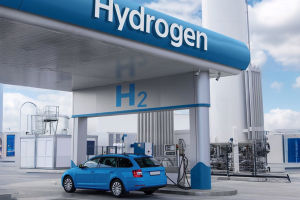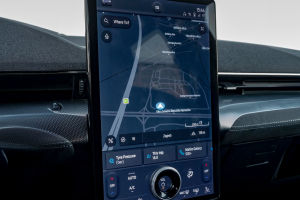When we think about the safety of our cars, we typically think about airbags, seatbelts, and sturdy frames designed to protect us in case of an accident.
But what if the technology inside our vehicles could prevent those accidents from happening in the first place? Thanks to artificial intelligence (AI), car safety is entering a whole new era.
We're seeing AI not only assist drivers but also take proactive steps to prevent crashes and keep us safe on the road. In this article, we'll explore how AI is revolutionizing vehicle safety and how it can help us drive with more confidence.
AI-Driven Safety Features
One of the most significant advancements AI has brought to the automotive world is the development of AI-driven safety features. These include technologies like lane-keeping assist, automatic emergency braking, adaptive cruise control, and collision detection systems. By using sensors, cameras, and machine learning algorithms, AI can process vast amounts of data in real-time to make split-second decisions that can avoid accidents.
For example, automatic emergency braking (AEB) systems are designed to detect potential collisions with other vehicles, pedestrians, or obstacles. If the AI detects that a collision is imminent, it can apply the brakes automatically, even before the driver has time to react. According to research from the Insurance Institute for Highway Safety (IIHS), AEB systems have been shown to reduce rear-end crashes by up to 50%, highlighting just how impactful AI can be in saving lives.
Advanced Driver Assistance Systems (ADAS)
We've all heard of "driver assistance," but did you know that many of these systems are powered by AI? Advanced Driver Assistance Systems (ADAS) are a group of AI technologies designed to assist with tasks like parking, navigating tight spaces, or even driving on highways. These systems are becoming more common in everyday vehicles and are proving to be essential in reducing human error on the road.
For instance, lane departure warning systems use AI to monitor the vehicle's position relative to lane markings. If the car drifts out of its lane without the turn signal being activated, the system alerts the driver. In some cases, AI can even take control of the steering to bring the vehicle back into the lane safely. By providing these extra layers of protection, AI is making driving safer, even for experienced drivers who might become distracted or fatigued.
AI and Accident Prevention: The Role of Sensors and Cameras
Another way AI enhances vehicle safety is through the use of sensors and cameras. These devices constantly scan the environment around the vehicle, detecting obstacles, road signs, traffic lights, and other vehicles. AI algorithms process this data in real-time, making decisions that help the vehicle navigate safely and avoid potential hazards.
For example, the AI in a self-driving car uses a combination of cameras, LIDAR (Light Detection and Ranging), and radar to create a 360-degree view of the surrounding environment. This allows the vehicle to "see" things that might be out of a human driver's line of sight, such as pedestrians walking on the sidewalk or cyclists approaching from behind. With the ability to react quickly to these situations, AI can prevent accidents that might otherwise have been missed.
Enhancing Driver Awareness with AI
AI doesn't just help cars drive themselves; it also helps us stay alert and aware while we're behind the wheel. Driver monitoring systems, for instance, use AI to detect signs of drowsiness or distraction. These systems use cameras to monitor facial expressions and eye movement, alerting the driver if they start to lose focus or show signs of fatigue.
Research from the National Highway Traffic Safety Administration (NHTSA) shows that driver fatigue is a major factor in many accidents. By using AI to monitor the driver's attention and alertness, these systems can encourage safer driving habits and help prevent accidents caused by tired or distracted drivers.
AI and the Future of Self-Driving Cars
Looking ahead, AI's role in automotive safety will only continue to grow. One of the most exciting developments is the potential of fully autonomous vehicles (AVs), which are already being tested by many companies. These self-driving cars rely entirely on AI to operate, using sensors, cameras, and machine learning to navigate roads and make decisions without any human input.
Autonomous vehicles could significantly reduce traffic accidents by eliminating human error—currently the leading cause of most accidents. While fully autonomous cars are still in development, the goal is clear: AI has the potential to make driving safer than ever before by removing the unpredictability and mistakes that come with human drivers.
Challenges and Limitations of AI in Vehicle Safety
While AI has made great strides in improving car safety, there are still challenges to overcome. One of the main concerns is the reliability of AI in complex or unexpected situations. For example, what happens when a car's sensors can't detect an obstacle because of poor weather conditions like fog or heavy rain? In these cases, human intervention is still necessary, and AI systems must be continually improved to handle such scenarios.
Additionally, ethical questions arise when discussing AI's role in life-or-death decisions. For instance, if an AI system has to choose between avoiding a pedestrian or swerving into a wall, what should it prioritize? These moral dilemmas are areas of ongoing research and debate in the field of autonomous vehicle development.
Conclusion: A Safer, Smarter Road Ahead
AI is already having a profound impact on vehicle safety, and its role will only continue to expand as technology evolves. From advanced driver assistance systems to fully autonomous cars, AI is helping to make our roads safer and more reliable. While there are still hurdles to overcome, the potential benefits of AI in car safety are undeniable.
As we look toward the future, we can expect AI to continue improving our driving experience, reducing accidents, and saving lives. So, the next time you get behind the wheel, take a moment to appreciate the role that AI plays in keeping you safe. What's your take on these advancements? Are you excited for the AI-powered cars of tomorrow?


